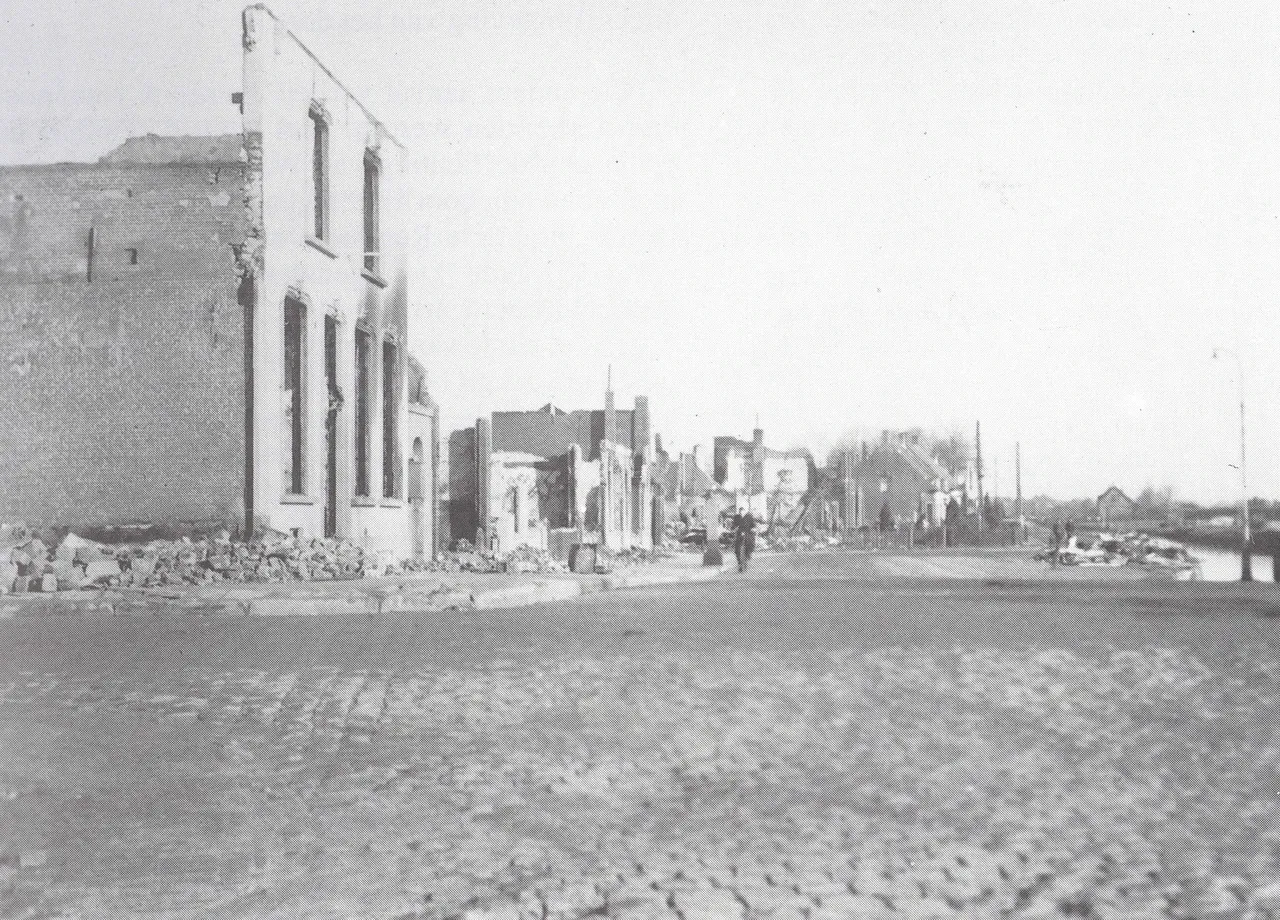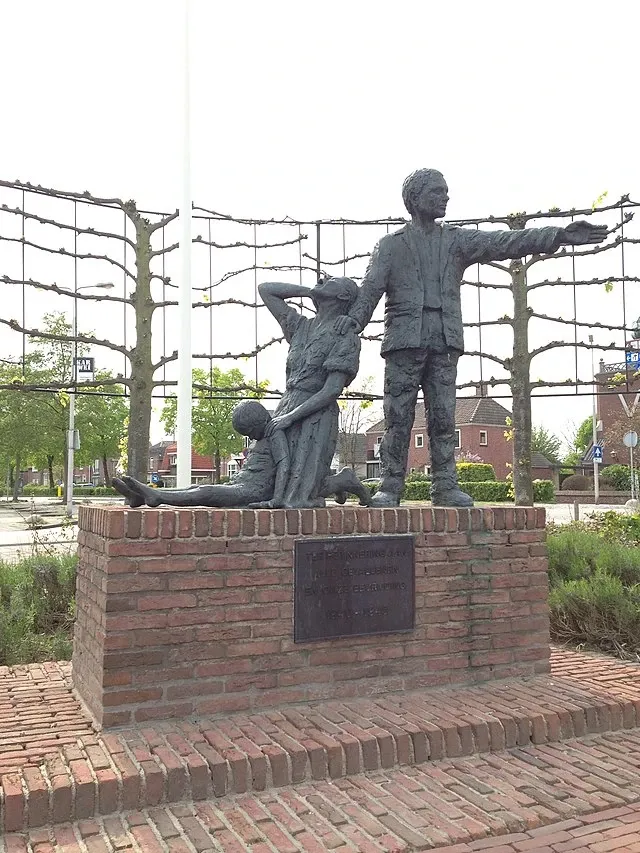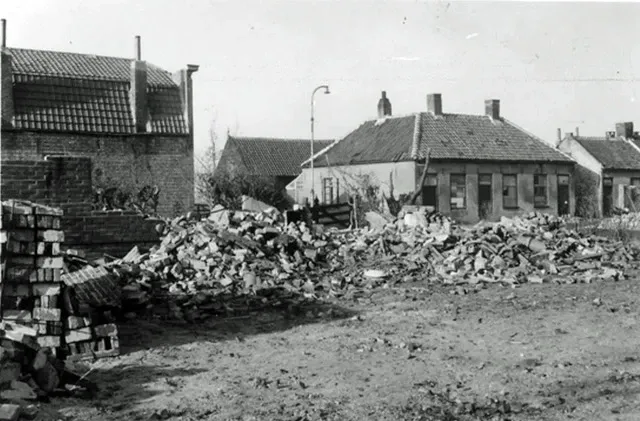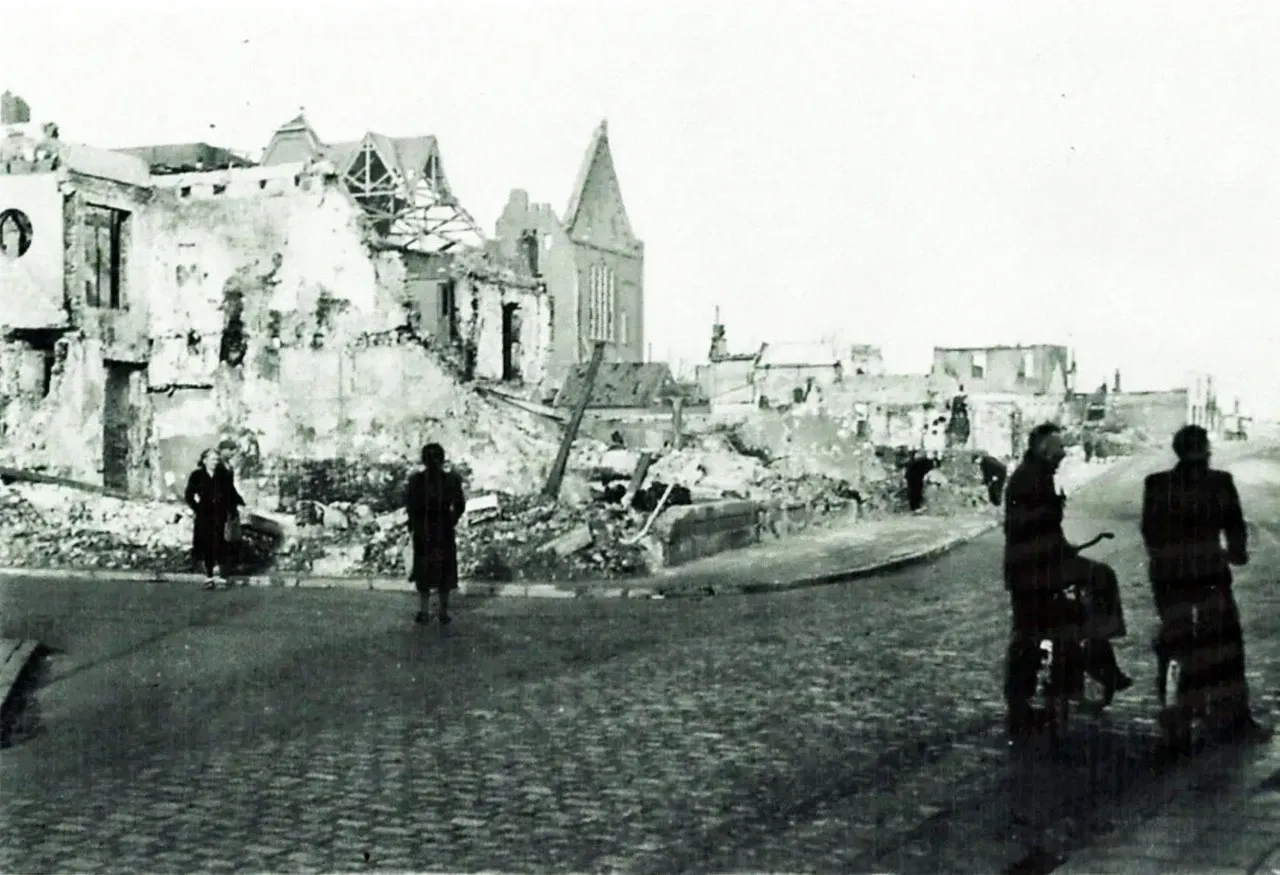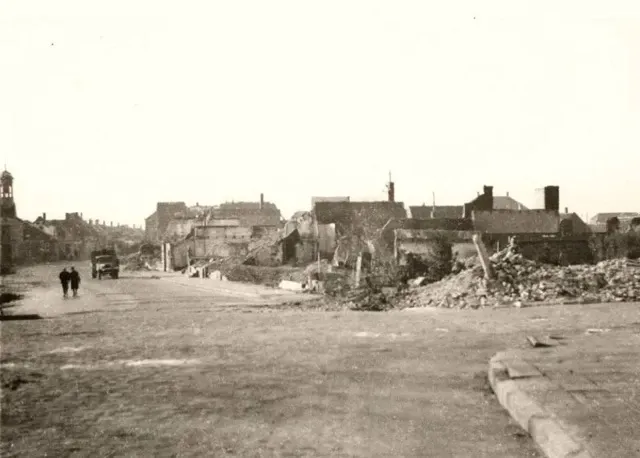Monument 1940-1945 Dinteloord: A dramatic example of 'collateral damage'
The noise of war had approached the West Brabant village of Dinteloord in the first days of November 1944. It stopped at Steenbergen, however, where the Canadian 4th Armoured Division encountered heavy opposition from German forces.
Show all 5 photos
In the early morning of Saturday 4 November 1944, the first fighter aircraft appeared in the sky as "army support". About 40 Spitfire aircraft from four different squadrons attacked the village in as many waves. Several pilots saw troop concentrations, an additional reason for heavy attacks.
Dozens of bombs landed on the village, setting it on fire. As if that was not enough, the first fighter aircraft was followed by another group of Typhoon aircraft. These were feared by the German troops because they were equipped with rockets. The pilots fired rockets at the towers of three churches in Dinteloord. Then all groups of aircraft carried out so-called "strafings", diving flights with on-board machine guns. As a result, unquenchable fires broke out in many places in Dinteloord. Buildings collapsed and entire streets disappeared. The inferno took the lives of many residents. The survivors fled in long columns into the safe marshland.
Liberation felt sou…
In the early morning of Saturday 4 November 1944, the first fighter aircraft appeared in the sky as "army support". About 40 Spitfire aircraft from four different squadrons attacked the village in as many waves. Several pilots saw troop concentrations, an additional reason for heavy attacks.
Dozens of bombs landed on the village, setting it on fire. As if that was not enough, the first fighter aircraft was followed by another group of Typhoon aircraft. These were feared by the German troops because they were equipped with rockets. The pilots fired rockets at the towers of three churches in Dinteloord. Then all groups of aircraft carried out so-called "strafings", diving flights with on-board machine guns. As a result, unquenchable fires broke out in many places in Dinteloord. Buildings collapsed and entire streets disappeared. The inferno took the lives of many residents. The survivors fled in long columns into the safe marshland.
Liberation felt sour when the next day British troops under Canadian command entered the almost totally destroyed village. Immediately, the liberators organised medical aid and evacuated the survivors. Almost fifty inhabitants did not live to see the liberation. The attack on Dinteloord was a poignant example of 'collateral damage' during Allied operations in North Brabant.
To this day, in Dinteloord, Saturday 4 November is regarded as the day of "the bombing" of their village.
